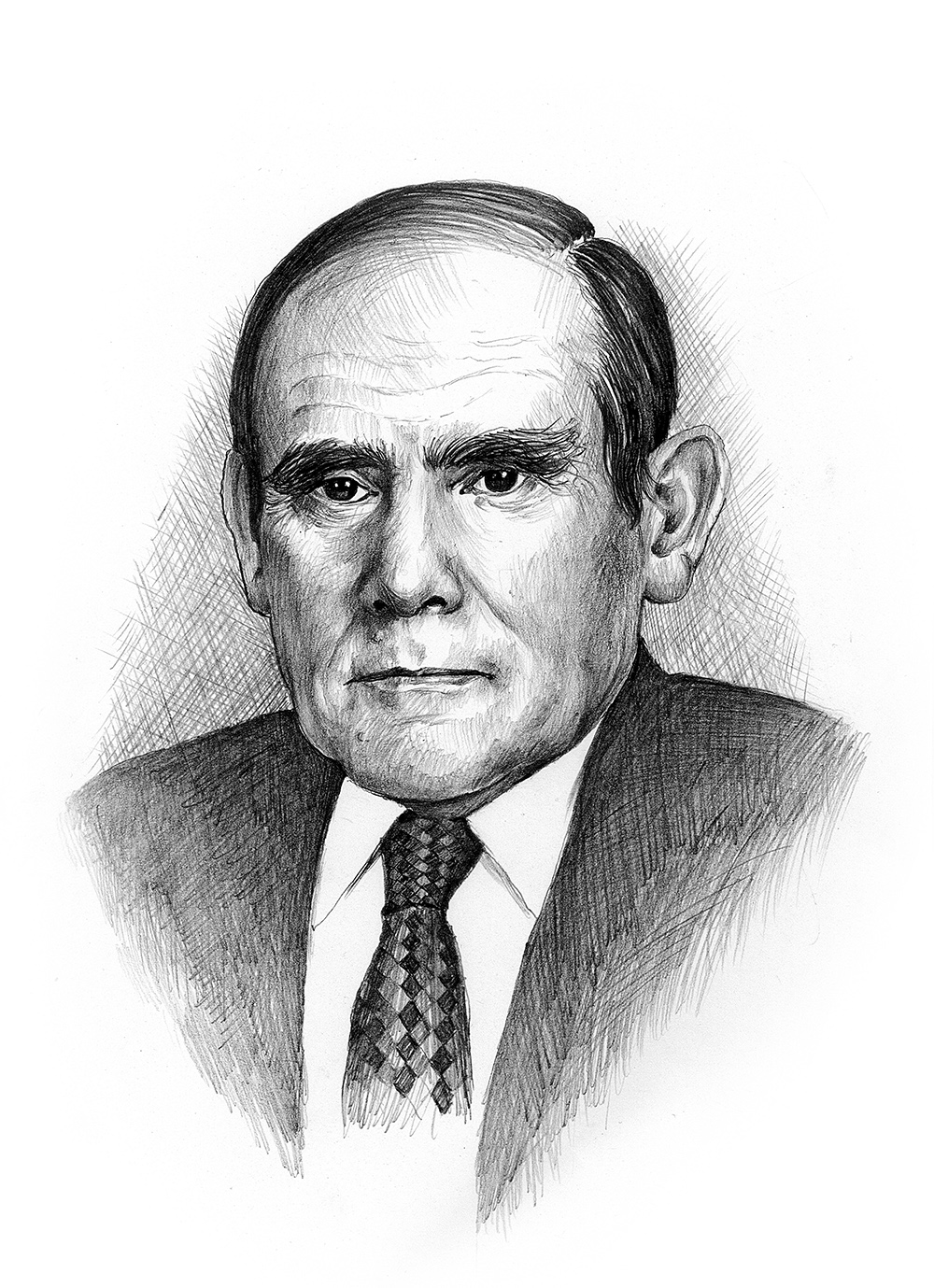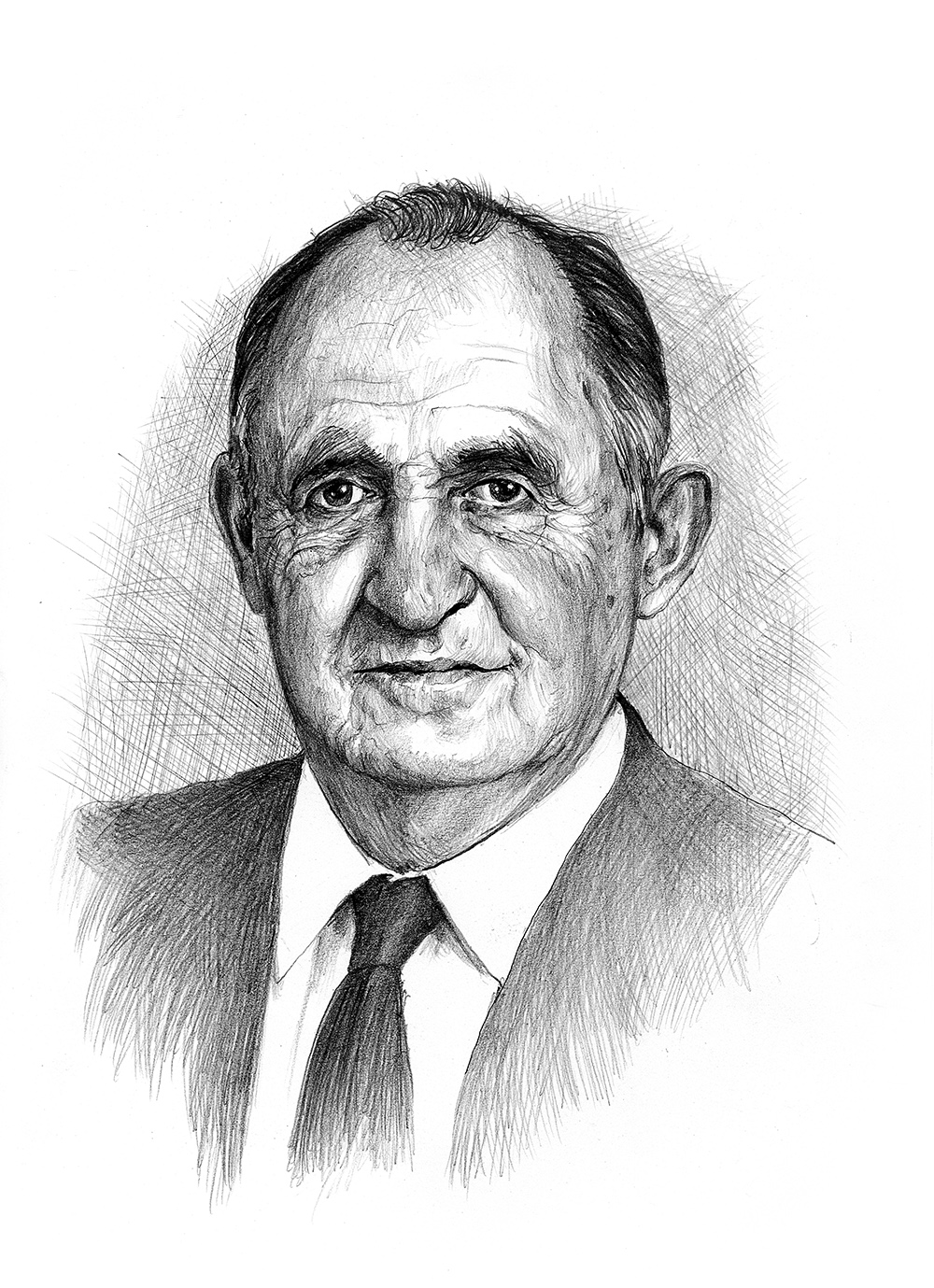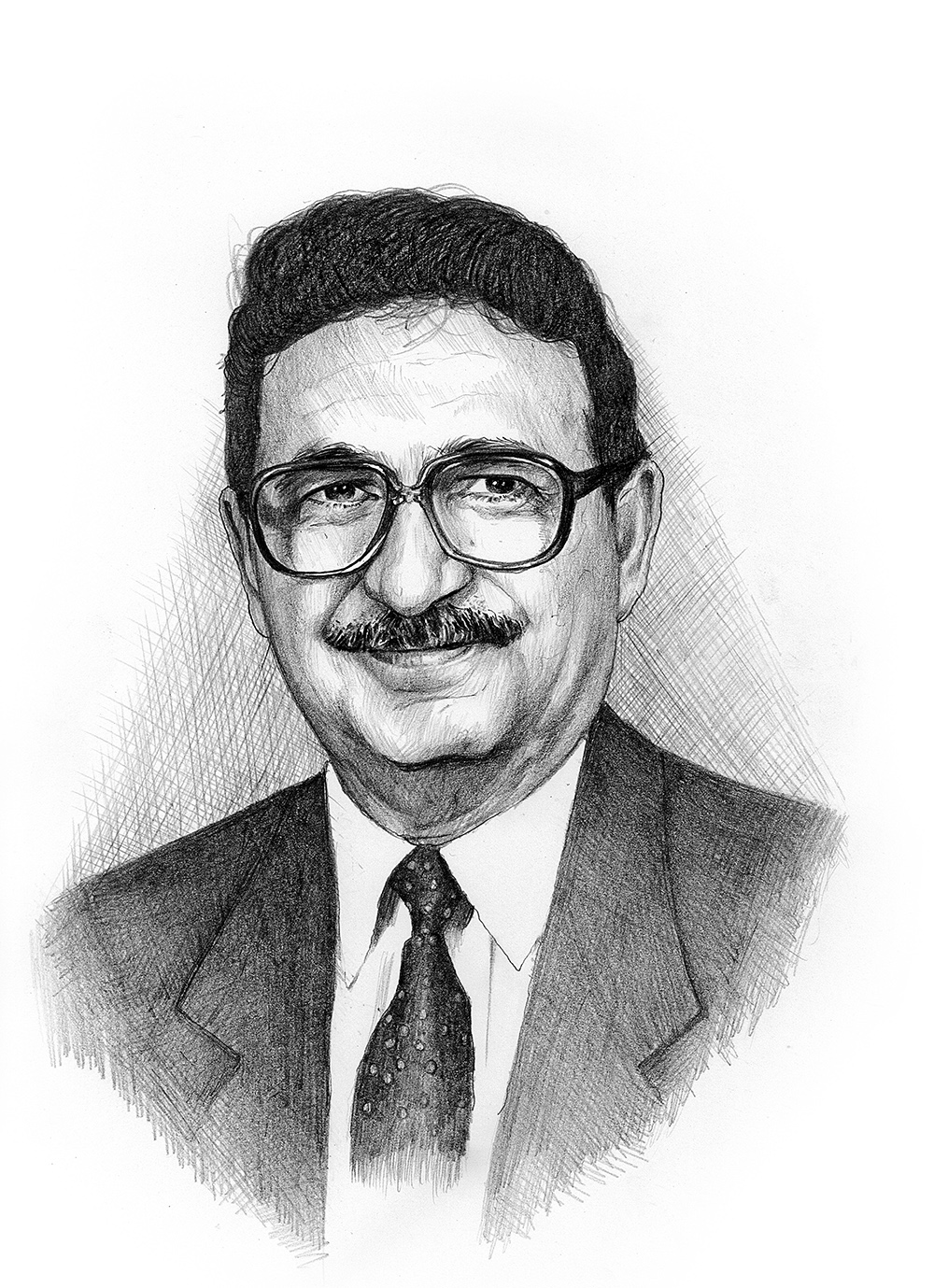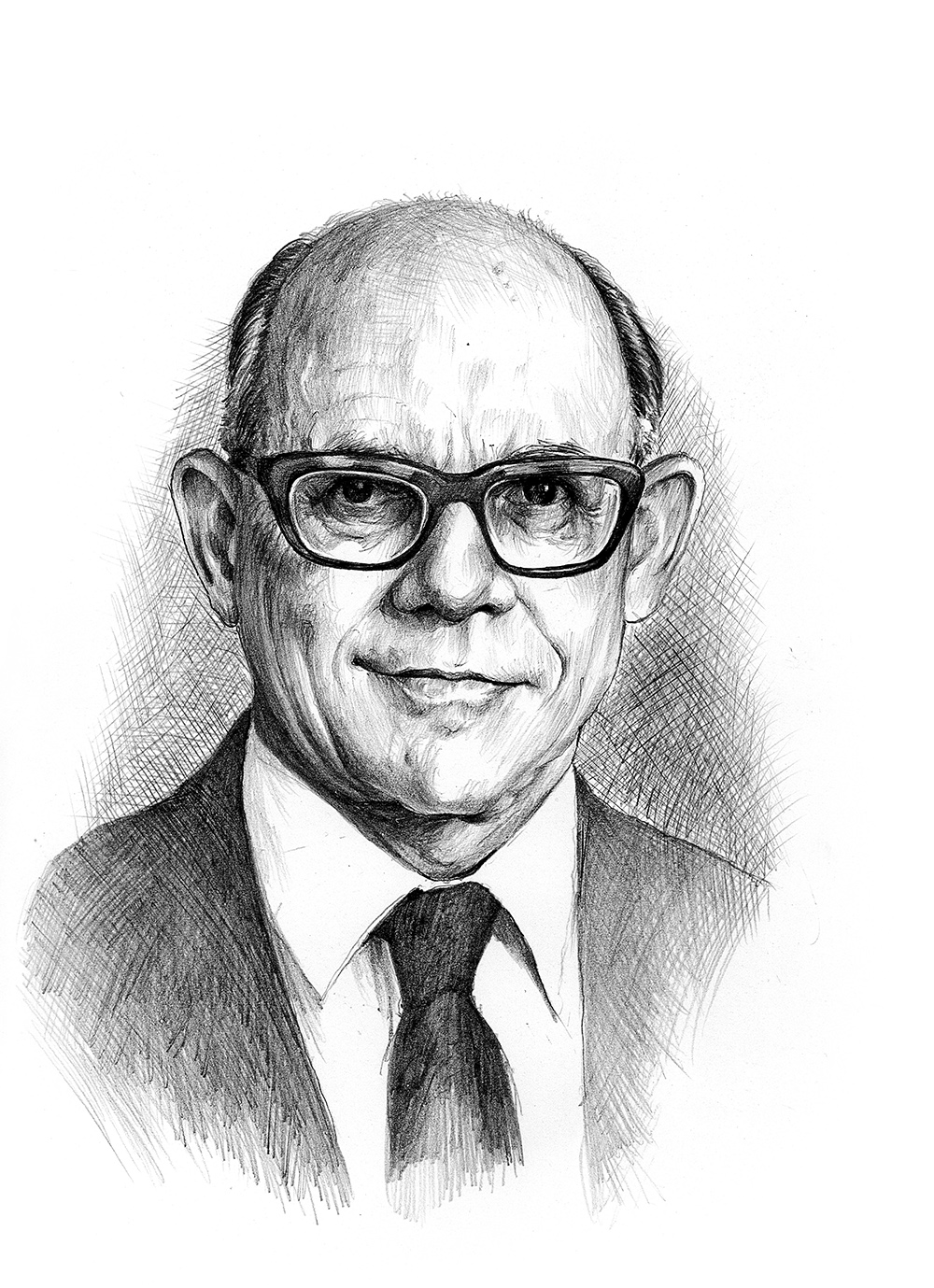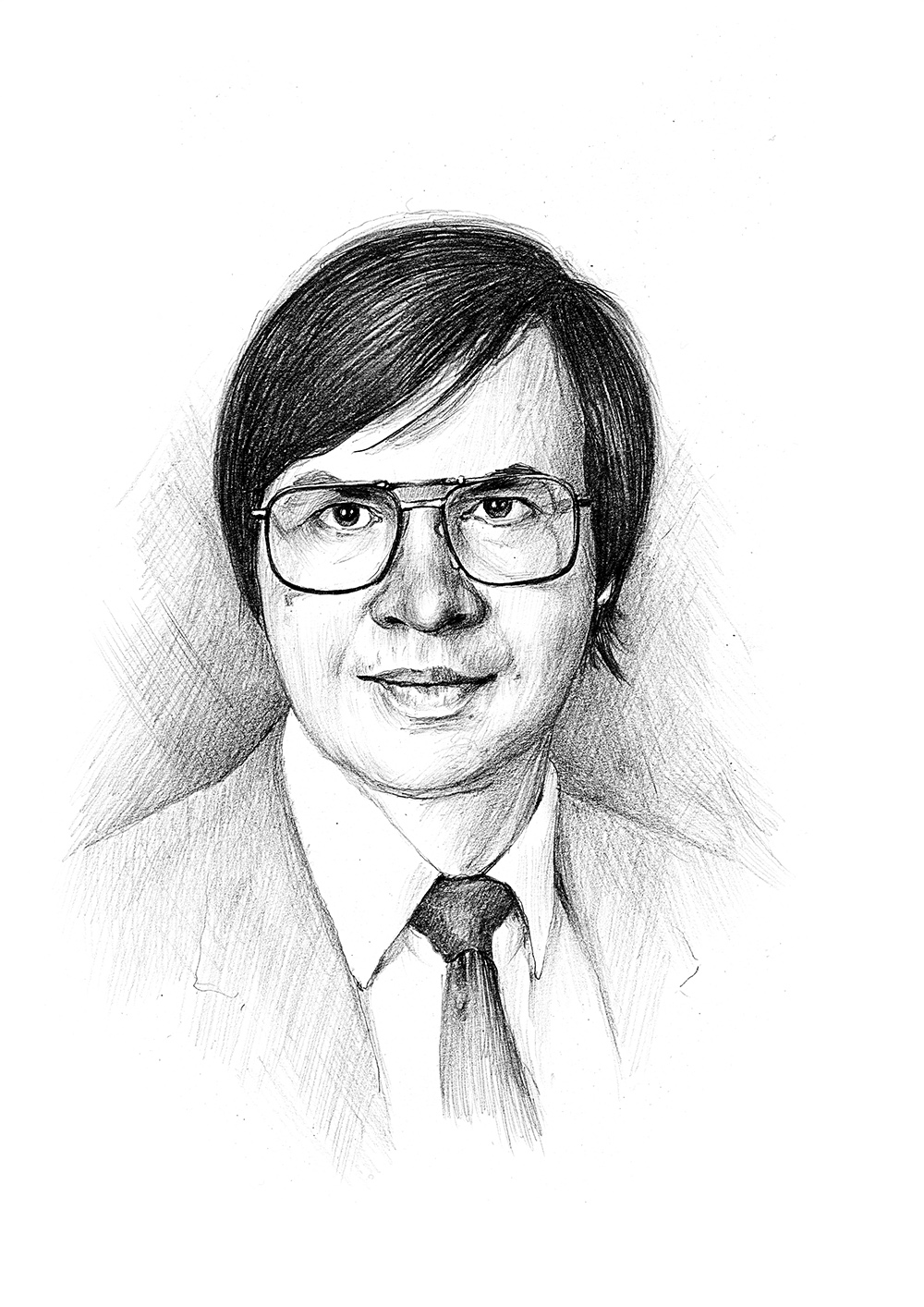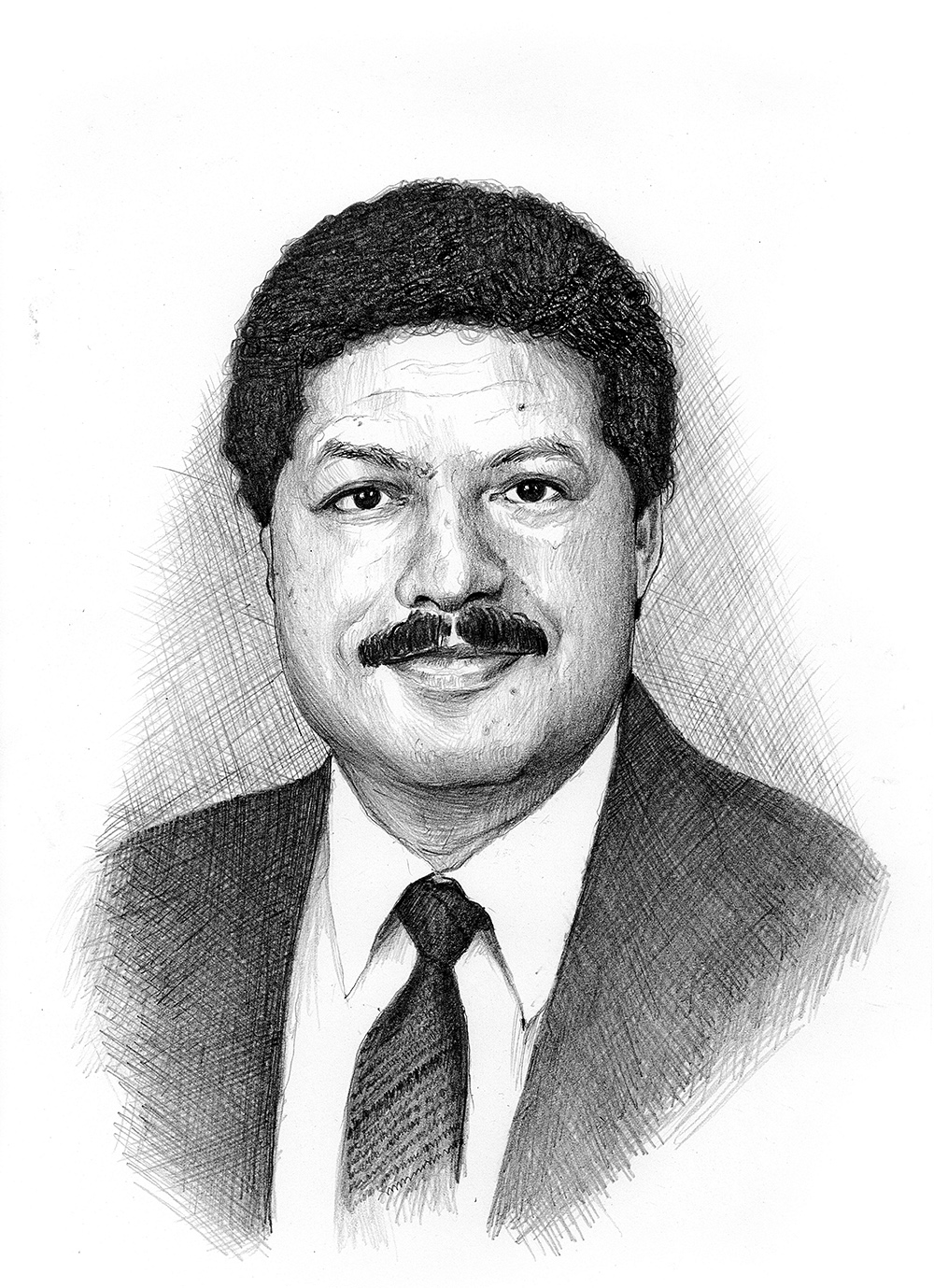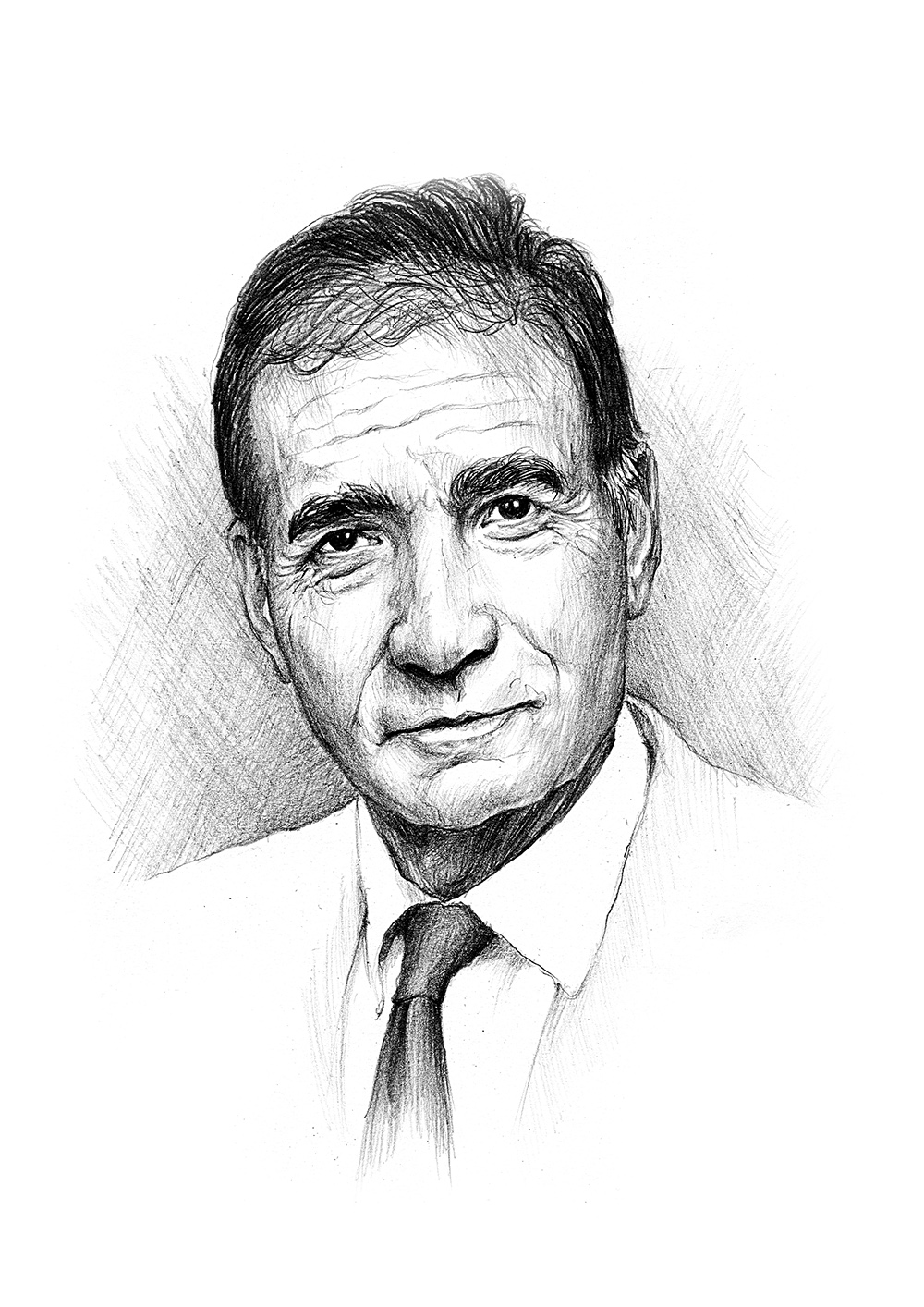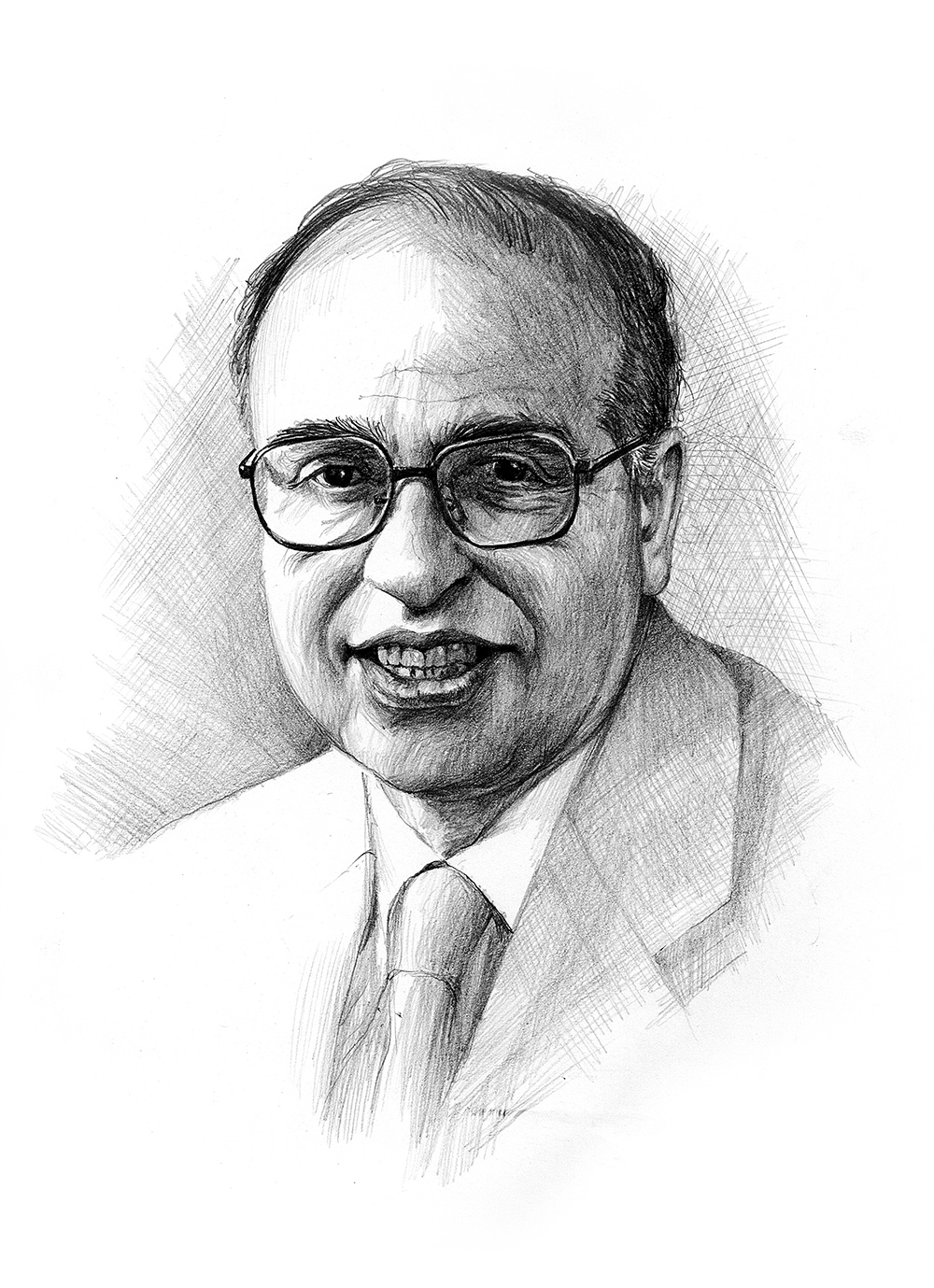Sydney Brenner received bachelor’s degrees in Biochemistry, Medicine, and Surgery, an M.Sc. in cell genetics at Witwatersrand in Johannesburg, and a Ph.D. at Oxford University, U.K. He is a Fellow of the Royal Society of London, the Royal Society of Edinburgh, the Royal College of Physicians, and the Royal College of Pathologists.
He spent most of his career working with the Medical Research Council (MRC) and became a Director of the MRC Molecular Genetics Laboratory in Cambridge, England, an Honorary Professor of Medical Genetics at Cambridge University, and a Visiting Professor at the Royal Free Hospital School of Medicine in London.
Professor Brenner was a giant of molecular biology. His distinguished scientific achievements over the past 40 years were pivotal in the development of modern concepts of molecular genetics and biology. His early work includes pioneering research on the structural identity of complex bacteriophages, mechanisms of chemical mutagenesis, characterization of chain-termination triplets and demonstration of the colinearity between a gene and its protein. However, his most significant earlier achievement was the establishment in the 1960s of the existence of messenger RNA and the proof that new mRNA molecules programmed pre-existing ribosomes to make new proteins. With the advent of cloning and sequencing of DNA, Brenner turned his attention to the direct study of genes and genomes, and initiated important molecular research based on the analysis of muscle genes of multicellular organisms. Using the tiny nematode Caenorhabditis elegans as a novel experimental model organism, he was able to link genetic analysis to cell division, differentiation, organ development and programmed cell death.
This biography was written in the year the prize was awarded.

